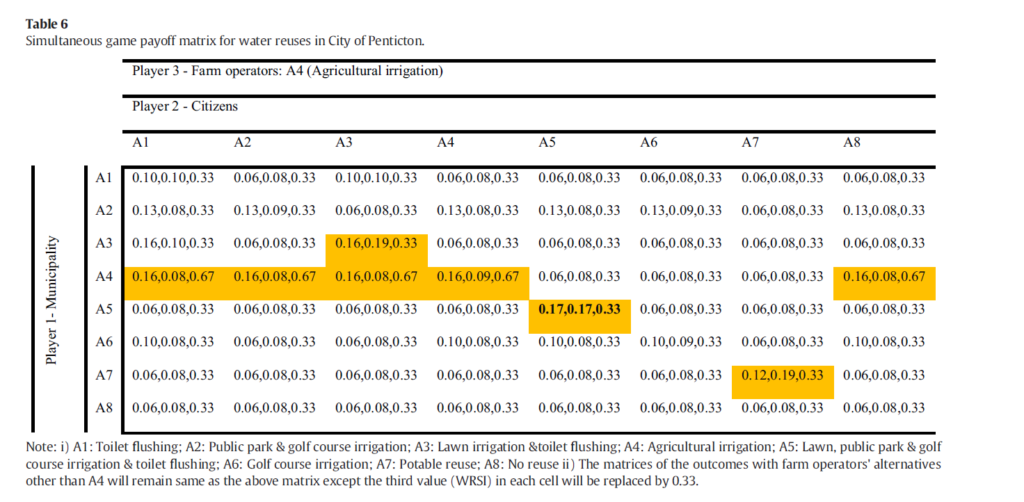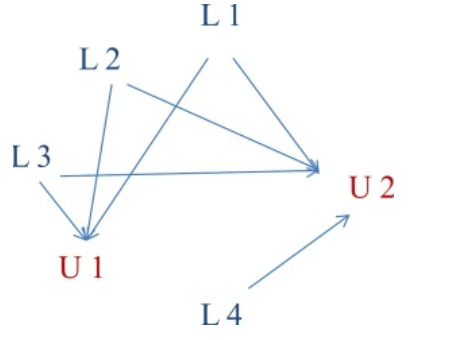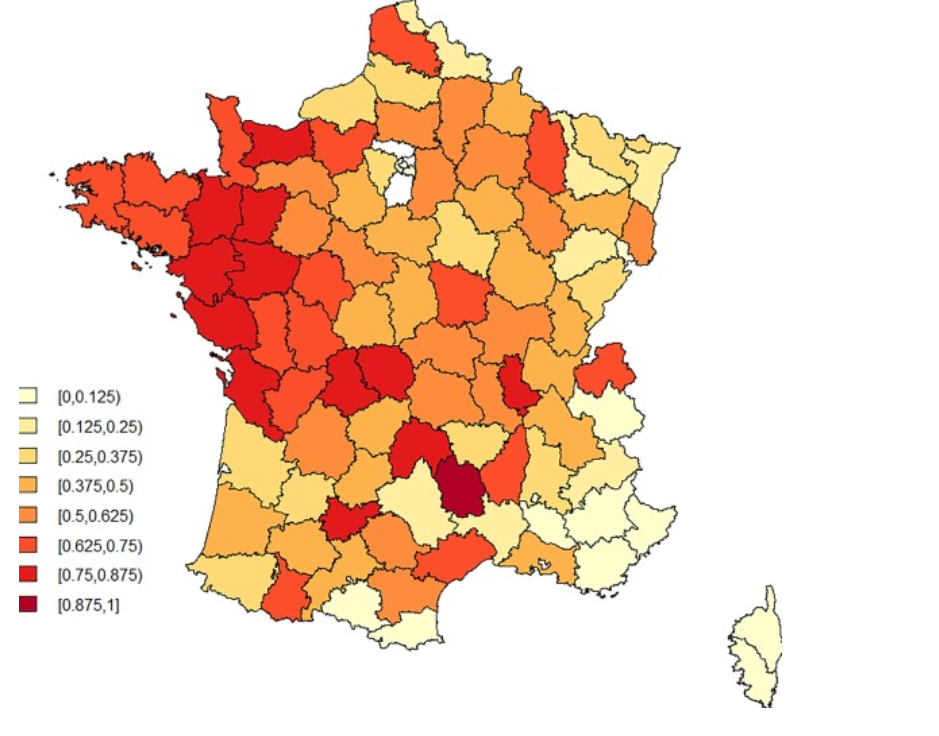Game theory is quite interesting topic and has a wide range of application in various fields ranging from math, business, to life sciences. Through this blog I would like to share an interesting application of Game theory. This is ‘Selection of sustainable municipal water reuse applications by multi-stakeholders using game theory’.
This research was conducted by Gyan Chhipi-Shrestha, Manuel Rodriguez, Rehan Sadiq. The goal of the research was to successfully show how Game theory (combined with Multi-criteria decision Analysis – something which is not in scope of our course) can be used to solve the complex, conflict involving decision of water reuse. Water reuse means using the treated (i.e. making it safe for reuse) municipal waste-water (also known as reclaimed water) for various purposes such as toilet flushing, irrigating golf courses/ gardens/ parks, etc. How and where to use this reclaimed water has different impact on different group of stakeholders such as municipality, citizens and the farm operators, making sustainable selection of water reuse a complex decision.
The sustainable of water reuse was assessed under three criteria – environmental (ex – carbon footprint, fresh water issues, etc), economic (cost of maintaining the water infrastructure, etc.) and social (acceptance from citizens, health risks, etc.) After these evaluations and collecting data for these stakeholders, they came up with 8 options/applications of water reuse such as toilet flushing, agricultural irrigation, potable use, etc. They then converted this data into a payoff matrix for a 3-player game which looks as follows –

Since water reuse benefits the government as well as the citizens, they considered this game as a co-operative game i.e. like the coordination game as we saw in this week’s lecture. To reach to the solution of this game, they made use of Pareto optimality. A strategy say s is Pareto optimal ”if there does not exist other strategy that dominates s.” In this case optimality is reached with mutual sharing of costs by the stakeholders for a specific water reuse application. The research reached to a conclusion that municipality will have the benefit of $35/household/year and also the citizens needed to spend $100/household/year for the dual plumbing of toilet and lawn for reclaimed water.
Thus, it can be seen that how powerful and versatile the Game Theory is and can be used in various areas and can also be combined with other ways of analysis/concepts.
REFERENCE
Chhipi-Shrestha, G., Rodriguez, M., & Sadiq, R. (2019). Selection of sustainable municipal water reuse applications by multi-stakeholders using game theory. Science of The Total Environment, 650, 2512–2526. doi: 10.1016/j.scitotenv.2018.09.359


